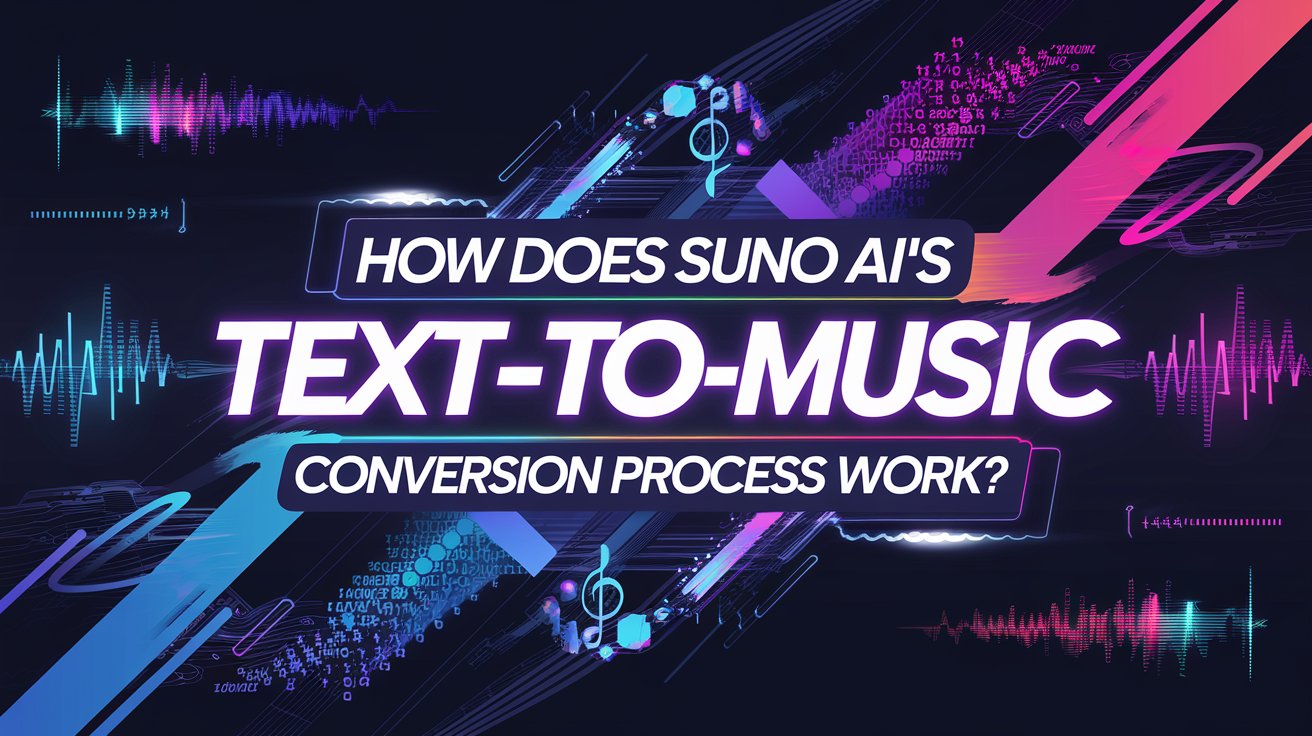Suno AI has redefined music creation by transforming simple text prompts into full-fledged songs with vocals, instruments, and lyrics. Its technology bridges the gap between human creativity and AI efficiency, enabling anyone to generate professional-quality music in seconds. Here’s a deep dive into how this groundbreaking system works.
The Core Technology Behind Suno AI
Suno AI combines multiple advanced AI models to interpret text and generate music:
- Large Language Models (LLMs):
Models like ChatGPT analyze text prompts to understand themes, emotions, and structural elements (e.g., “a blues song about midnight rain with piano”). They generate lyrics and guide the musical style. - Diffusion Models:
These refine raw audio outputs, adding layers of complexity to melodies and harmonies for polished results. - Transformer Architectures:
Transformers process sequences of musical notes and rhythms, ensuring coherence in compositions. - Generative Adversarial Networks (GANs):
Paired with Recurrent Neural Networks (RNNs), GANs create realistic vocals and instrumental tracks by learning from vast music datasets.
Step-by-Step: From Text to Music
1. Input Interpretation
Users describe their vision in plain language (e.g., “upbeat pop song about summer adventures with synth beats”). Suno’s NLP system breaks this into components:
- Genre: Pop
- Mood: Upbeat
- Instruments: Synthesizers
- Theme: Summer nostalgia.
Advanced tools like NVIDIA’s NeMo Parakeet ASR enhance prompt understanding, ensuring even abstract ideas are captured.
2. Lyric and Melody Generation
- The LLM crafts lyrics matching the prompt’s tone and structure. For example, a prompt about “frog sounds at night” yielded bluesy lyrics:
“Beneath the moon’s pale light, the croak and chorus come alive…” - Simultaneously, diffusion models generate melody patterns, while transformers map chord progressions and rhythms.
3. Vocal Synthesis
Suno’s vocal engine uses RNNs to produce human-like singing, complete with emotional inflections. Users report the vocals often sound “surprisingly authentic,” blurring lines between AI and human artists.
4. Instrumental Arrangement
GANs create backing tracks tailored to the genre. For a house music prompt, the AI layered electronic beats with pulsating basslines. Users can specify instruments or let the AI choose.
5. Post-Processing and Output
The final mix balances vocals and instruments. Suno offers two versions per prompt, allowing users to pick their favorite or remix elements. Outputs are downloadable as MP3s or video tracks with AI-generated album art.
Customization and Control
While Suno excels at speed, it also provides tools for fine-tuning:
- Custom Mode: Paste existing lyrics or adjust tempo/key.
- Style Adaptation: Modify outputs to mimic specific artists or eras.
- Professional Features:
- Train Suno on personal music libraries for personalized outputs.
- Convert lyrics to sheet music for live performances (upcoming feature).
Real-World Applications
- Education: Teachers generate curriculum-based songs (e.g., animal classification themes).
- Filmmaking: Directors create custom soundtracks without hiring composers.
- Content Creation: YouTubers and podcasters use Suno for royalty-free background scores.
Limitations and Ethical Considerations
- Creative Control: Text prompts can’t yet dictate precise chord changes or vocal timbres.
- Copyright Risks: Suno avoids direct mimicry of copyrighted works, but legal gray areas remain.
- Cultural Impact: Critics argue AI music could devalue human artistry, though proponents see it as a democratizing force.
The Future of Suno AI
Plans include expanded genre support, multi-language lyrics, and collaborative tools where artists and AI co-create in real time. As Suno’s CEO noted, “We’re not replacing musicians—we’re giving them superpowers.
Suno AI’s process—melding NLP, generative models, and ethical design—proves that AI can be both a tool and a collaborator. While challenges persist, its ability to turn “text into symphony” marks a seismic shift in how we create and experience music.



